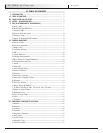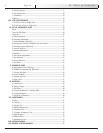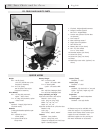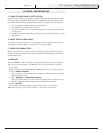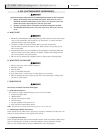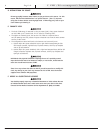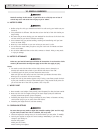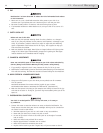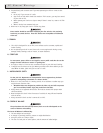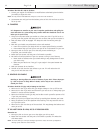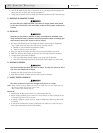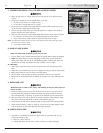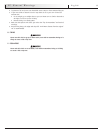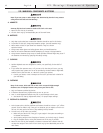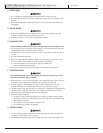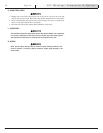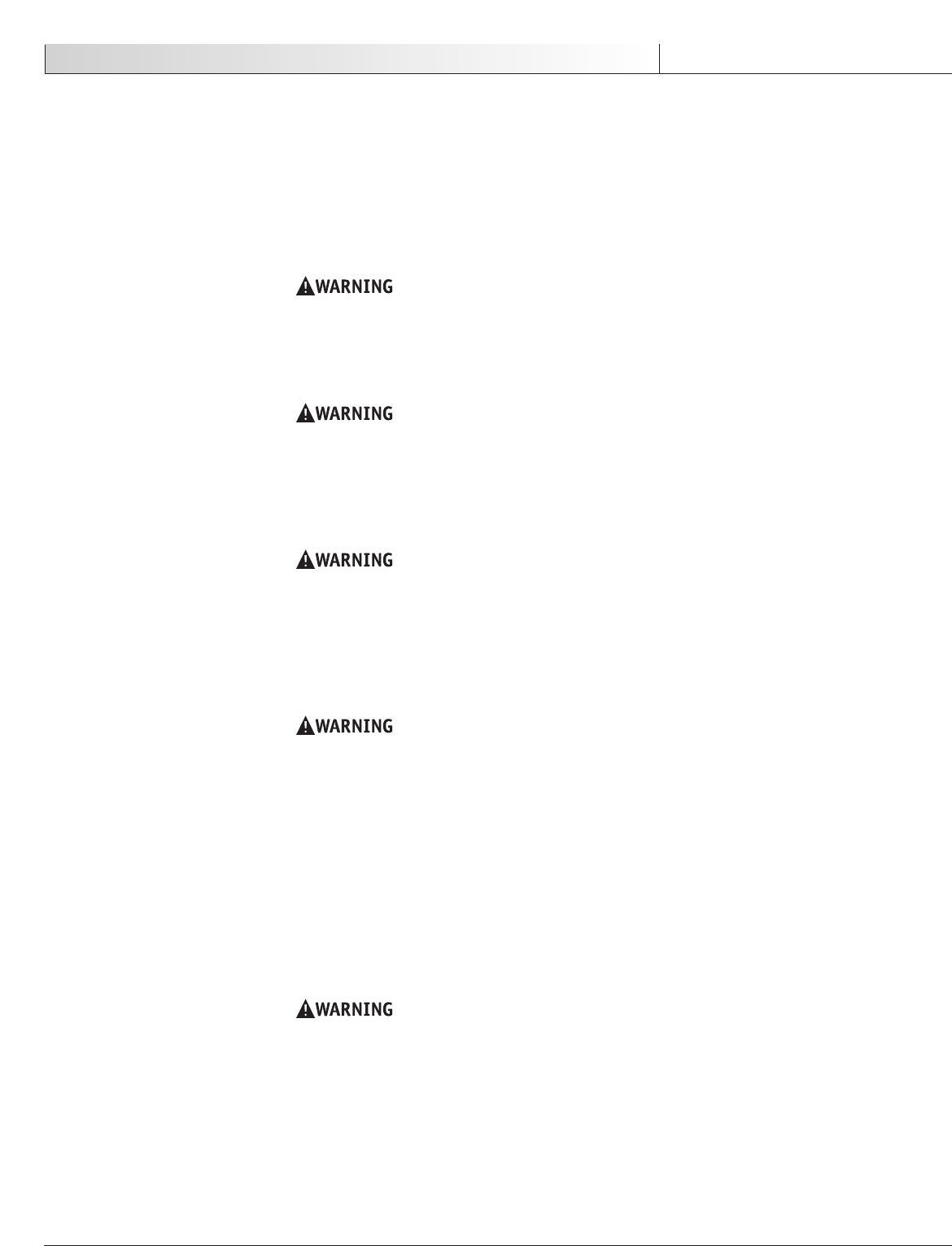
930756 Rev. B
2. Proceed slowly and use extra care if you must operate your chair on a wet or slick
surface.
• Do so only if you are sure it is safe.
• Stop if one or both main wheels lose traction. If this occurs, you may lose control
of your chair or fall.
• Never operate your chair on a slope or ramp if there is snow, ice, water or oil film
present.
• When in doubt, have someone help you.
3. When not in use, keep your chair in a clean, dry place.
Extra caution should be used when employing the disc switch or the proximity
head array as contr
ol devices. These two devices are susceptible to malfunction
when wet.
J. TERRAIN
1. This chair is designed for use on firm, even surfaces such as concrete, asphalt and
indoor flooring.
2. Do not operate your chair in sand, loose soil or over rough terrain. Doing so may
damage wheels, bearings, axles or motors, or loosen fasteners.
K. STREET USE
In most states, power chairs are not legal for use on public roads. Be alert to the
danger of motor vehicles on roads or in parking lots.
1. At night, or when it is hard to see, use reflective tape on your chair and clothing.
2. It may be hard for d
rivers to see you. Make eye contact with drivers before you pro-
ceed. When in doubt, yield until you are sure it is safe.
L. MOTOR VEHICLE SAFETY
To date, the U.S. Department of Transportation has not approved any tie down
system for transporting a wheelchair in a motor vehicle.
1. Never sit in this chair while in a moving vehicle. In an accident or sudden stop you
may be thrown fr
om the chair.
• Wheelchair belts are designed to position the rider only and will not protect
y
ou in an accident; further injury may result from the belts.
2. Always move to an approved vehicle seat. You must be secured with proper motor
vehi
cle restraints.
3. Never transport this chair in the front seat of a vehicle. It may shift and interfere
with the driver.
4. Always secure this chair so that it cannot roll or shift.
M. CENTER OF BALANCE
The point where this chair will tip forward, back or to the side depends on its
center of balance and stability.
The Center Of Balance Is Affected By:
1. The seat height and seat angle.
2. A change in your body positi
on, posture or weight distribution.
3. Using this chair on a ramp or slope.
4. The use of a back pack or other options, and the amount of added weight.
VI. General Warnings
11
English



